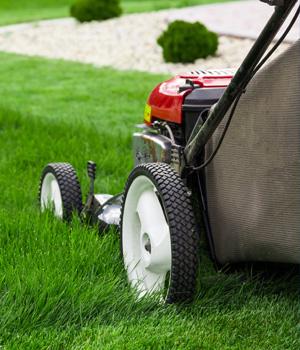Watering
When irrigating a lawn, you must pay attention to the timing and amount of water, just as you do when fertilizing. If you begin watering fescue in the spring, be prepared to water all season long. The grass can become dependent on irrigation, and experience drought stress if watering stops during midsummer.
In the summer, fescue needs about 1.0 inch of water per week. This amount can come from either rainfall or irrigation. If temperatures are extremely high, the grass may need 1.5 inches per week.
When irrigating fescue, it is best to provide enough water to wet the soil to a depth of four to six inches at each application. Following this advice is easy if the soil doesn't contain much clay. However, if the soil has high clay content or is compacted, runoff may occur before sufficient water is applied. In this case, stop watering and begin again about 30 minutes later.
Common mistakes when irrigating fescue include applying water in the evening or in small amounts at frequent intervals. Always water your lawn so the grass is dry by night fall. If you water your lawn four or more times a week and wet only the grass or the soil surface, you are creating favorable conditions for diseases such as brown patch.

BASIC WATERING CHECKLIST
Water your lawn in early morning.
Be kind to the environment and save water and money by watering your lawn in the early morning. The least amount of water will be lost to evaporation at this time. An early morning watering schedule also reduces disease problems and poor water distribution caused by wind.
Give lawns grown on sandy soils 1/2 inch of water when irrigating. Lawns on heavy soils should receive 1 inch.
Measure irrigation water by placing a can or two on your lawn to catch the water. Compacted soils may take several shorter periods of irrigation to allow the water to be absorbed. Avoid surface runoff.
Don't water until you see first signs of wilt.
Wilted lawns have a blue-green appearance, leaf curl, or you may see footprints that remain on the lawn. Look along sidewalks or roadside surfaces for first signs of wilt. Light, frequent waterings promote shallow roots and weaken turf. Don't overwater. This promotes diseases and excessive growth.

